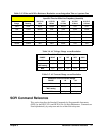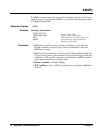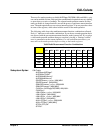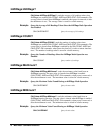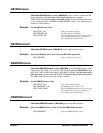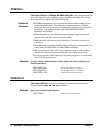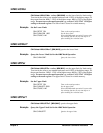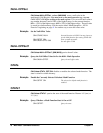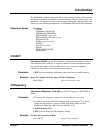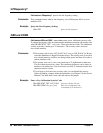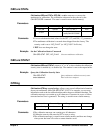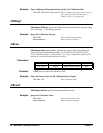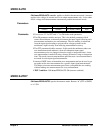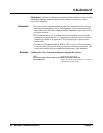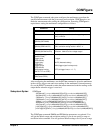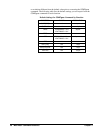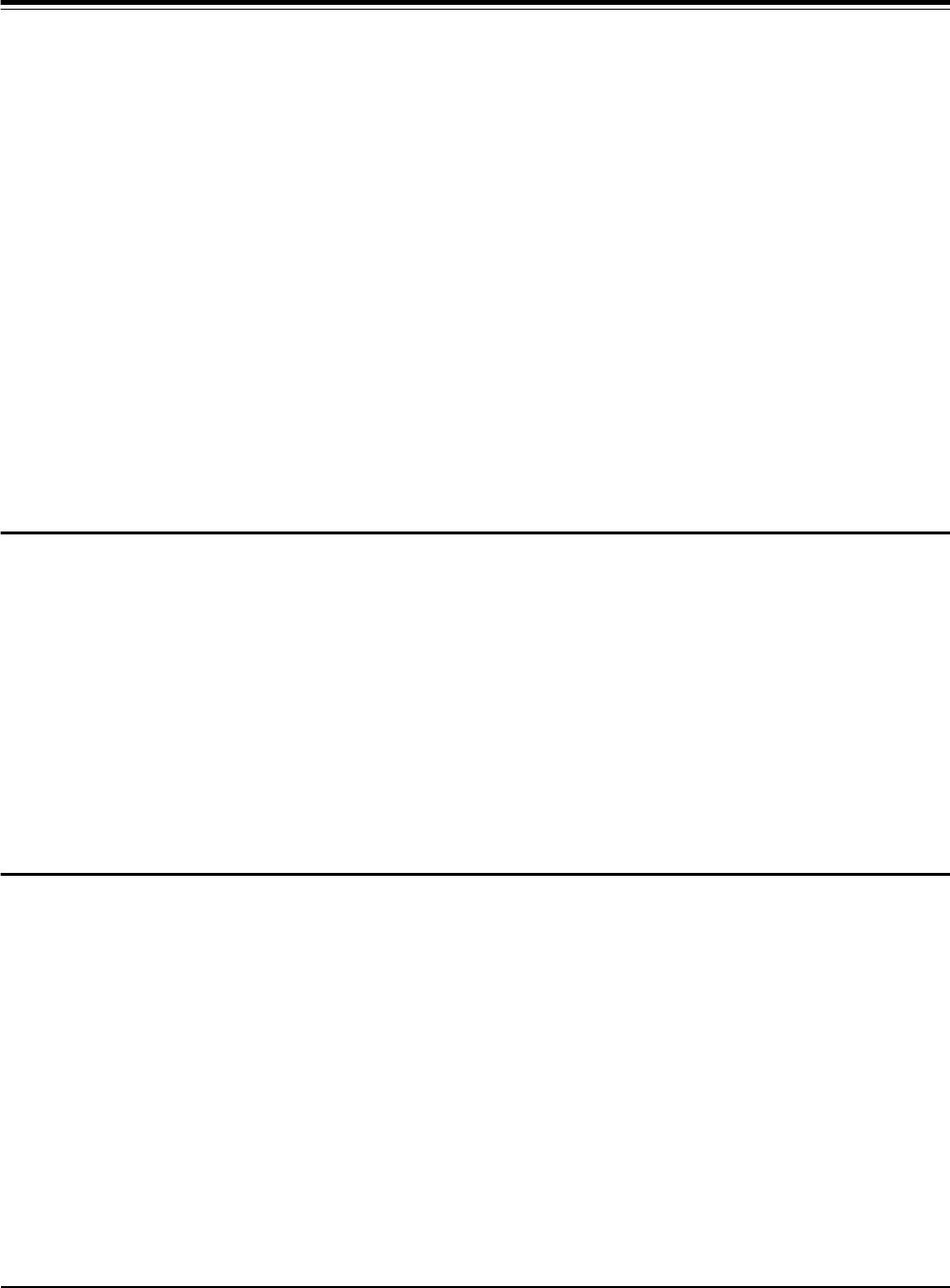
Multimeter Command Reference 79Chapter 3
CALibration
The CALibration command subsystem allows you to enter a security code to prevent
accidental or unauthorized calibrations of the multimeter. When you first receive your
multimeter, it is secured. You must unsecure it by entering the correct security code
before you can calibrate the multimeter (see
CALibration:SECure:STATe command).
Subsystem Syntax CALibration
:COUNt?
:LFRequency 50|60|400
:LFRequency? [MIN|MAX]
:SECure:CODE <
new code>
:SECure:STATe OFF|ON,<
code>
:SECure:STATe?
:STRing <
quoted string>
:STRing?
:VALue <
cal_value>
:VALue?
:ZERO:AUTO ON|OFF
:ZERO:AUTO?
:COUNt?
CALibration:COUNt? queries the multimeter to determine the number of times a
point calibration has occurred. A complete calibration of the multimeter increases
the count by the number of points calibrated. It is not a record of complete
calibrations. The count is stored in non-volatile memory.
Comments • *RST does not change the calibration count stored in non-volatile memory.
Example Query the Number of Occurrences of Point Calibrations
CAL:COUN?
Query the calibration count.
:LFRequency
CALibration:LFRequency 50|60|400 sets the line frequency to either 50Hz or
60Hz.
Comments • The wrong line frequency setting will cause reading errors to occur.
• You must execute the CAL:LFR command with a parameter of 50 or 400 to
change the line frequency setting to 50Hz. Specifying 400Hz sets line
frequency to 50Hz since 400 is an even multiple of 50.
• Default Setting: 60Hz
• *RST does not change the line frequency setting.
Example Set the Line Frequency to 50Hz
CAL:LFR 50
Change the line frequency.



